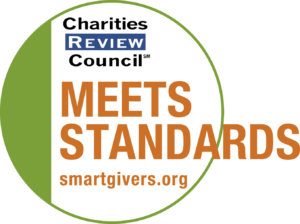
This past year, Bamber Valley Elementary School third-grader Regan Roche saw her reading ability improve thanks to a personalized approach to her needs: She read to a literacy tutor every day.
The sessions lasted only 20 minutes or so, but Rochester educators have discovered the one-to-one sessions have the ability to improve reading fluency significantly. In Roche’s case, her reading ability doubled from 40 words per minute to 80 words per minute.
“She has made huge growth,” said Abby Sellnow, who served as Bamber Valley’s literacy tutor this year.
The results have come courtesy of the Minnesota Reading Corps, a statewide service project that offered tutoring to nearly 600 Rochester kindergarten-through-grade-three elementary students this year.
These were students who had fallen behind in grade level and were in danger of failing the reading portion of the third-grade Minnesota Comprehensive Assessment. Of those who worked with tutors and completed the program, more than 82 percent passed the reading test, said Katie Schafer, Rochester’s master coach for the Minnesota Reading Corps.
“Our teachers love it,” Schafer said. “We get programs coming in and out of districts all the time. When they find out it works, they are ecstatic.”
Literacy tutors have been in Rochester schools for six years, and with plans to continue the program in the fall, Rochester is still looking for tutors. Of the 23 positions the district hopes to fill, about eight to 10 remain open, officials say.
The one-on-one nature of the program is a big reason for the program’s success, Rochester officials say. Tutors have the time to diagnose a particular reader’s strengths and weaknesses and to develop strategies to address a student’s shortcomings. Tutors also work closely with reading experts in getting feedback and developing those strategies.
“It works because it is consistent, one-on-one, 20-minutes-a-day practice with those students who need that extra little push,” said Lori Eckert, a district reading specialist.
The personalized instruction is aimed at students whose reading ability is “just below grade level” and who could benefit from six weeks or so of one-on-one work to catch up, Eckert said. The program aims to be fast and efficient. Once a child exits the program, another student is brought in. But some stay longer. Without it, it is doubtful these students would be getting help from any of the district’s other remedial programs, which serve kids in need of longer-term interventions.
MRC is a branch of AmeriCorps, a domestic version of the Peace Corps that engages people in service-oriented projects across the nation. It gets its funding from a variety of sources, including federal and state government.
The program is a good deal, in both an educational and financial sense, for school districts such as Rochester, which placed at least one literacy tutor in each of its 16 elementary schools this year. For Rochester, that translated into a half-a-million dollar asset before in-kind contributions such as coaching time from Rochester reading specialists and supplies and materials are factored in, Schafer said.
The tutors come from different walks of life. They can include aspiring teachers, recent college graduates, retirees, stay-at-home moms and religious leaders. The only qualifications are that the tutor have a high school degree and a willingness to commit to the program for one year. Literacy tutors are considered volunteers because of the modest stipend they receive: About $480 every two weeks. If they maintain their year-long commitment, they also qualify for a $5,000 grant that they can use to defray the cost of their college education.
Sellnow called her year serving as a literacy tutor at Bamber Valley a “wonderful experience.”
As an aspiring teacher freshly graduated from college last year, Sellnow said she didn’t feel she was quite ready to tackle the classroom. At Bamber Valley, she served about 18 students at a time. Now, after a year spent tutoring and learning a dozen reading strategies, Sellnow feels more prepared and able to handle a fuller range of student needs. And it apparently didn’t hurt her job prospects. Sellnow has been offered teaching jobs at two school districts, including one in Rochester schools.




